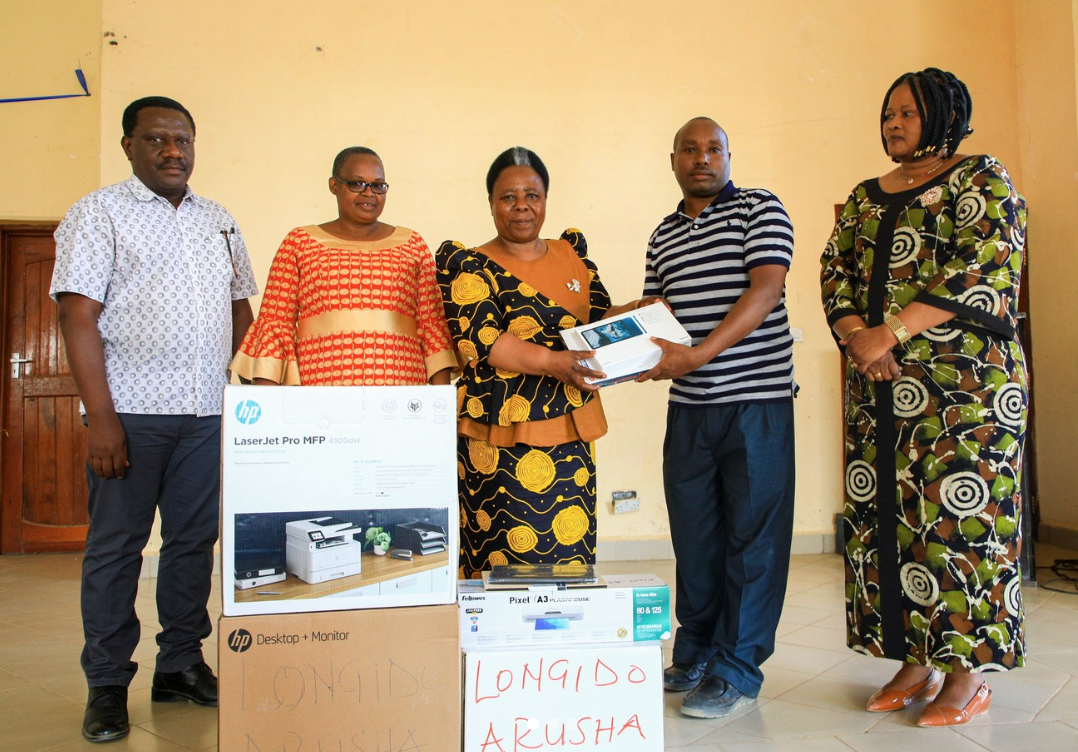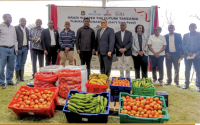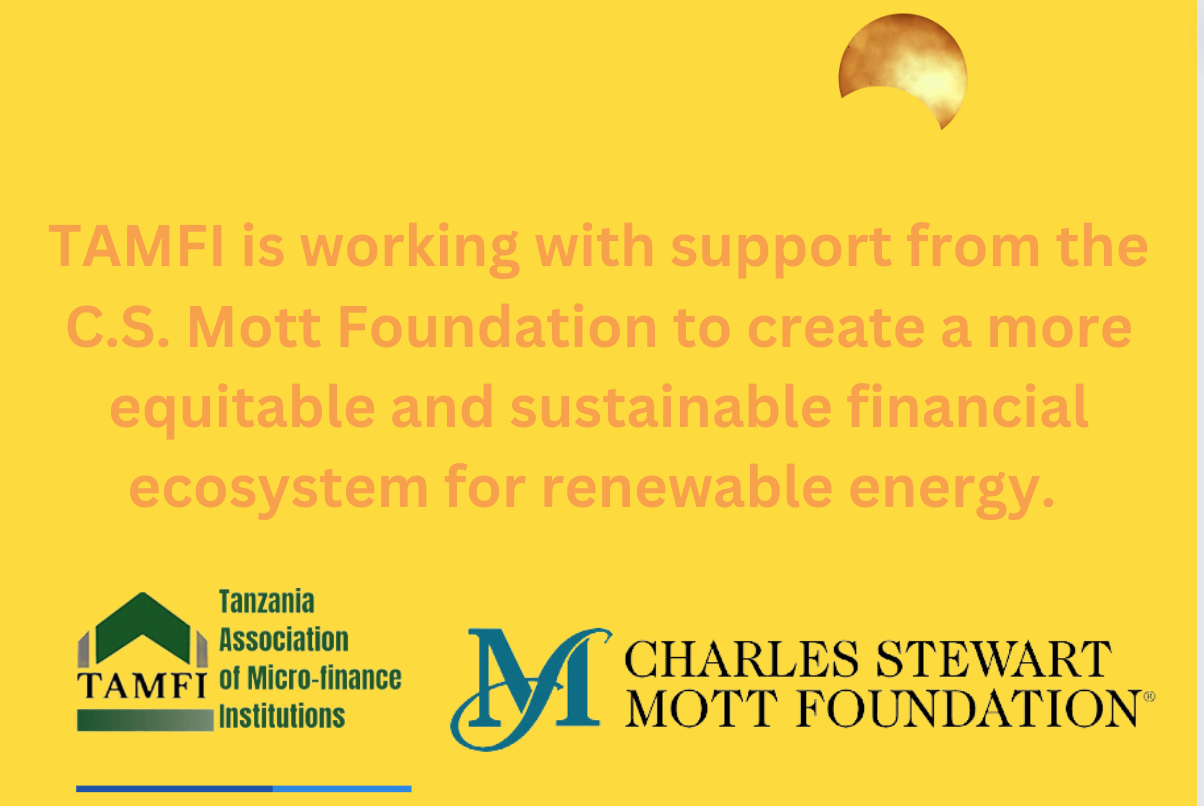AGRF: The trade potential in the Tanzania yellow bean corridor exceeds USD200million per year from about 200,000MT of yellow beans
By Hussein Bashe, Minister of Agriculture, Tanzania
In Tanzania, the common bean plays a key role in the livelihoods of smallholder farmers as a food and nutrition security crop and a source of income. It is the leading legume crop, accounting for 78% of the land area cultivated with legumes. Tanzania produces an estimated 1.2 million tons of beans annually, making the country the top bean producer in Africa and seventh globally. Close to 6 million households in rural Tanzania depend on beans for their daily food, with per capita bean consumption estimated at 20 kg per person per year.
The Pan-Africa Bean Research Alliance (PABRA) – with support from the Governments of Canada and Switzerland, the Bill and Melinda Gates Foundation (BMGF) among other development partners – has implemented various initiatives to build sustainable agri-food systems and promote economic growth in Tanzania. Some of the ongoing projects include: (i) Improving Bean Production and Marketing in Africa, funded by Global Affairs Canada (GAC), (ii) Improving food security, nutrition, incomes, natural resource base and gender equity for better livelihoods of small holders in sub-Saharan Africa, funded by SDC, (iii) Accelerating Variety Improvement and Seed Systems in Africa (AVISA), funded by BMGF, (iv) Technologies for African Agricultural Transformation, funded by the African Development Bank, among others.
PABRA implements these initiatives through the ‘’Bean Corridor’ model to unlock production bottlenecks including access to quality seed of improved varieties, quantity, and quality of grains and ultimately to satisfy the consumer demand. The corridor defines the research products that PABRA focuses on in response to the market requirements. Partnering with key bean value chain actors through bean business platforms has opened business opportunities. There is increased understanding of the grain demand in terms of bean type, quantity, quality, and important traits for consumers which have been critical in defining research priorities.
As a result of promising lines introduced by the Alliance of Bioversity International and CIAT, the Tanzania Agriculture Research Institute (TARI) – a member of PABRA – released 15 farmer and consumer demanded varieties between 2018 to 2021. These released varieties are high yielding, micronutrient-rich (high in iron and zinc), pest and disease resistant, and climate-smart (i.e. maturing within 67 – 110days, and are tolerant to drought). The recently released varieties are yellow, red mottled, sugar, red kidney and Kablanketi (purple) responding to the existing bean corridors in Tanzania.
The bean business platforms facilitated by PABRA have catalyzed linkages between grain aggregators and producers and opened business opportunities for other value chain actors such as seed producers, input suppliers, financial institutions, mechanization service providers.
In seven years (2015-2021), small and medium seed companies producing certified seed have grown from zero to 15, with three of the enterprises being led by women. The number of Quality Declared Seed (QDS) producers increased from 26 to 58 during the same period. As a result, the quantity of certified and QDS seed produced increased five-fold – from about 500 tons in 2015 to more than 2,500 tons in 2020. The number of farmers accessing seed increased from 135,000 to 2.3 million cumulatively from 2015 to 2021.
TARI and PABRA are also working with various partners from the private sector to promote Good agronomic practices (GAP) that enhance bean productivity, as well as mechanization services to reduce the labour burden especially for women in bean production, while creating job opportunities for the youth.
Overall, the support to bean work in Tanzania has seen an increase in bean yield from 0.48tons/ha in 2003 to 1.34tons/ha in 2020. This has resulted in increased bean production from about 333,000 tons to over 943,000 tons over the same period. This has contributed to enhanced food security and incomes for smallholder farmers in Tanzania.
About 48 percent of bean production is sold to her neighboring countries (such as Burundi, DRC, Kenya, Malawi Rwanda, South Africa, Uganda, and Zambia). The quantity exported has been growing at an average annual rate of 10 percent since 2005. The trade potential in the Tanzania yellow bean corridor exceeds USD200million per year from about 200,000MT of yellow beans.
PABRA has built the capacity of four small women-led enterprises to produce and market value-added nutritious bean-based products such as bean porridge flour, biscuits, and packed grains. To improve child nutrition, PABRA and TARI are collaborating with Local Government Authorities and Ministry of Education in promoting the use of High Iron and Zinc bean (HIB) varieties in schools. The pilot phase started with twenty-two schools in five districts in 2018, later expanding to 107 schools in 17 districts by end of 2018, 259 schools in 19 districts in 2019 and 492 schools (about 240,000 children) in twenty-three districts by 2021. More than half of the children reached are girls. Various development partners have also joined the effort to support dissemination of biofortified bean varieties to schools across Tanzania among them district councils, NGOs (Project Concern International, Save the Children, World Vision International, CARITAs, Actions for Development Program- Mbozi, Food and Agriculture Organization, the Global Alliance for Improved Nutrition and HarvestPlus). To ensure effective support on improving the diet for school children and community in general, the Government of Tanzania developed national guidelines for use of biofortified diets in schools.
| Na | Item | 2022 | 2030 |
| 1 | Tanzania Population (estimates) | 62 Milioni | 80 Milioni |
| 2 | Domestic Food Demand | Tani Milioni 14 | Tani Milioni 20 |
| 3 | Agriculture sector Growth | 4-5% | 10% |
| 4 | Africa Popultaion (Estimates) | 1.39 Bilioni | 1.69 Bilioni |
| 5 | Africa Value of Agro Business | USD 700 Milioni | USD 1 trilioni |
| 6 | The value of food crops imported into Africa | USD Bilioni 40 | USD Bilioni 90 |
| 7 | Export income from the Agriculture Sector | $1.2 bil | $5 bil |
| 8 | Irrigated Area | 727,000 Hekta | 10 Millioni Hekta |
| 9 | Value addition of crops before Export | 10% | 50% |
| 10 | Reduce imports of; Sugar, Edible Oil, Wheat, Fertilizer | 20:60:90:90 | 0:30:50:0 |
| 11 | Reducing Post-Harvest Loss | 35% | 5% |
These are just a few examples of the successes achieved through PABRA’s collaboration with the government of Tanzania. As we look to the future, the government of Tanzania will consolidate its partnership with PABRA, national programs and other partners towards transfer of technologies and innovations for increasing bean production and advancing the prospects for improving food and nutrition security, boosting incomes and contributing to healthier ecosystems.
*Abridged version of SPEECH BY HON. HUSSEIN MOHAMED BASHE, MINISTER OF AGRICULTURE, UNITED REPUBLIC OF TANZANIA ON THE OCCASION OF THE CELEBRATION OF 25 YEARS OF THE PAN AFRICA BEAN RESEARCH ALLIANCE (PABRA) AT THE AGRF 2022 PRE-SUMMIT SIDE EVENT


